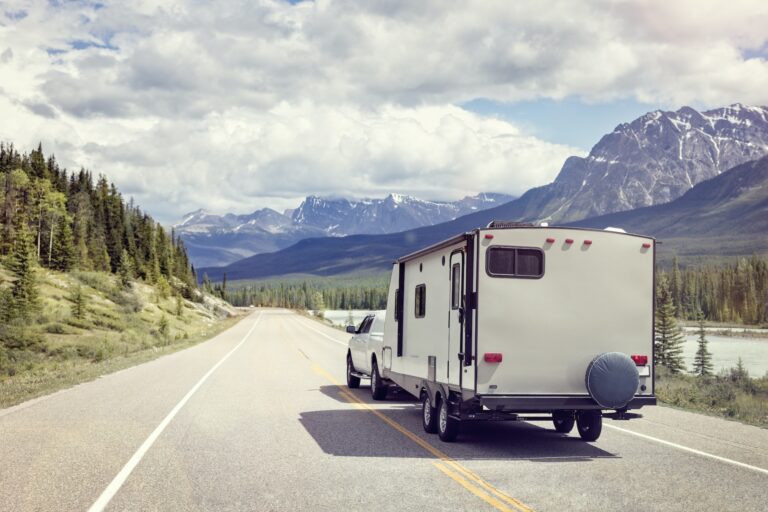Traveling in an RV can be a liberating and exciting experience, allowing you to explore new places and make unforgettable memories. However, the weather can sometimes be unpredictable, and it’s critical for RVers to be prepared for a variety of weather conditions to ensure a safe and enjoyable trip. In this comprehensive guide, we’ll provide essential tips for navigating inclement weather while RVing, from planning and preparation to safety measures and actions to take during severe weather.
Planning and Preparation
Before hitting the road, it’s crucial to take some time to plan and prepare for any possible weather conditions you might encounter. Here are a few essential steps to take during the planning stage:
- Check the weather forecast: Before embarking on your journey, always check the weather forecast for your travel route and destination. This will give you an idea of what to expect, allowing you to make any necessary adjustments to your plans and preparations. Keep in mind that weather can change rapidly, so it’s essential to stay updated on the forecast throughout your trip.
- Research local weather patterns: Familiarize yourself with the typical weather patterns of the regions you’ll be traveling through, as this can help you anticipate potential issues and make informed decisions. Understanding the seasonal patterns, such as hurricane season in coastal areas or tornado season in the Midwest, can help you avoid dangerous situations.
- Plan your route with weather in mind: When planning your route, consider the weather conditions you might encounter and adjust your itinerary accordingly. For instance, driving through mountain passes during heavy snowfall may be hazardous, so you might choose an alternate route or delay your trip until conditions improve.
- Create an emergency weather plan: Develop a plan for dealing with severe weather, such as identifying safe locations to shelter in place or evacuation routes. Make sure all members of your travel party are familiar with the plan and know what to do in case of an emergency.
- Prepare your RV for various weather conditions: Ensure your RV is in good working order and equipped to handle a range of weather conditions, from extreme heat to heavy rain or snow. This may include checking the tires, brakes, and windshield wipers, as well as having a working heating and cooling system.
Essential RV Weather Safety Tips
When it comes to RVing in inclement weather, it’s essential to keep safety at the forefront of your mind. Here are five key tips to help you stay safe during your travels:
- Stay informed about changing weather conditions: While on the road, use a weather app or NOAA weather radio to stay up-to-date on the latest weather conditions and forecasts. These tools can provide real-time information and alerts, allowing you to take appropriate action if necessary.
- Know the signs of severe weather: Familiarize yourself with the signs of severe weather, such as dark, ominous clouds, strong winds, or sudden drops in temperature. Recognizing these signs can help you take prompt action to protect yourself and your RV.
- Slow down and adjust your driving accordingly: When driving in inclement weather, it’s crucial to slow down and adjust your driving to suit the conditions. This may include increasing your following distance, avoiding sudden braking or steering, and using your headlights in low visibility situations.
- Seek shelter during severe weather: If you encounter severe weather, such as a tornado, hurricane, or heavy thunderstorm, it’s essential to seek shelter immediately. This may involve pulling over and waiting out the storm in your RV, or if you’re in a tornado-prone area, finding a sturdy building to take cover in.
- Avoid driving through flooded areas: Never attempt to drive through flooded roads or low-lying areas, as the water may be deeper than it appears, and your RV could become stranded or swept away. Turn around and find an alternate route if you encounter flooding.
Actions to Take During Severe Weather
If you find yourself caught in severe weather while RVing, it’s essential to know what actions to take to protect yourself and your RV. Here are five key steps to follow:
- Stay calm and assess the situation: In any emergency, staying calm is essential. Take a moment to assess the severity of the weather and determine the best course of action. If necessary, refer to your emergency weather plan.
- Secure your RV: If you need to shelter in place, ensure your RV is secure by closing all windows, vents, and doors, and retracting awnings and slide-outs. Disconnect any external power sources and secure any loose items, both inside and outside the RV.
- Take shelter in a safe location: If you need to evacuate your RV due to severe weather, such as a tornado, seek shelter in a sturdy building, preferably one with a basement or interior room without windows. If no building is available, find the lowest-lying area, such as a ditch, and lie down flat, covering yourhead and neck with your arms to protect yourself from flying debris.
- Monitor weather updates and alerts: While sheltering, continue to monitor weather updates and alerts using a weather app or NOAA weather radio. This will help you stay informed about the progress of the storm and when it is safe to return to your RV or resume your travels.
- Inspect your RV for damage after the storm: Once the severe weather has passed, carefully inspect your RV for any damage. Look for issues such as leaks, broken windows, or damage to the exterior or undercarriage. If you find any significant damage, it’s essential to address it before continuing your journey.
Post-Storm Recovery
After a severe weather event, it’s crucial to take the necessary steps to recover and resume your travels safely. Here are a few tips for post-storm recovery:
- Report any damage to your insurance company: If your RV sustained damage during the storm, contact your insurance company as soon as possible to report the damage and begin the claims process. Make sure to take photos of the damage to document the event.
- Assess the safety of your travel route: Before hitting the road, make sure your planned travel route is safe and passable. Severe weather can cause road closures, downed trees, or washed-out bridges, so be prepared to adjust your route if necessary.
- Restock emergency supplies: After a severe weather event, take inventory of your emergency supplies and restock any items that were used or depleted. This may include first aid supplies, bottled water, non-perishable food, and batteries.
- Learn from the experience: Use your experience with severe weather as an opportunity to learn and improve your preparedness for future incidents. Reflect on what worked well and what could have been done differently, and make any necessary adjustments to your emergency weather plan.
- Share your experiences with fellow RVers: Sharing your experiences with severe weather can help others learn from your experiences and better prepare themselves for similar situations. Consider writing a blog post, participating in online forums, or sharing your story on social media to help other RVers stay safe during inclement weather.
In conclusion, proper planning and preparation for inclement weather are crucial for RVers to ensure a safe and enjoyable trip. By staying informed about weather conditions, knowing the signs of severe weather, and taking appropriate actions during and after storms, you can minimize risks and protect yourself, your travel companions, and your RV.






